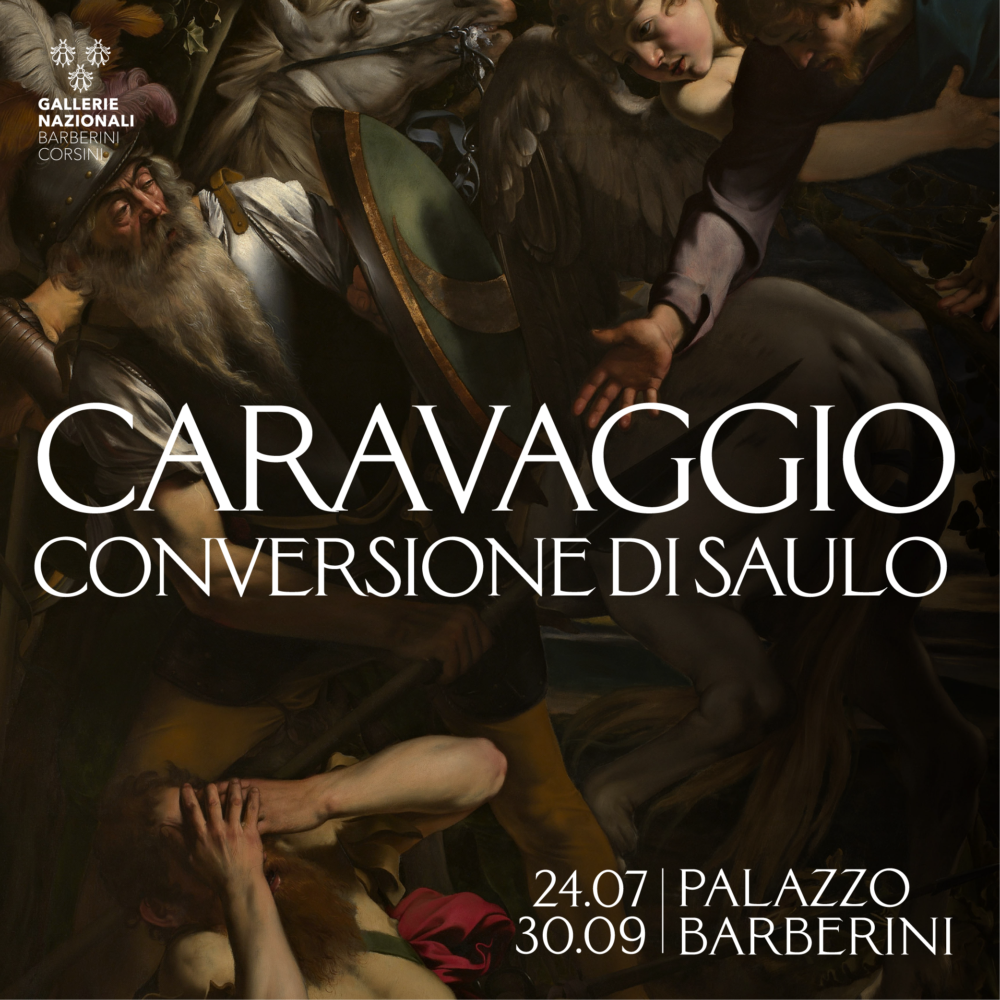
Caravaggio. Conversion of Saul
24 July 2025 - 30 September 2025
On the heels of the success of the exhibition Caravaggio 2025, the Gallerie Nazionali di Arte Antica announce the extension of the exhibition of the Conversion of Saul, the famous altarpieceby Michelangelo Merisi da Caravaggio, also known asthe Odescalchi Altarpiece.
The painting will remain on public view at Palazzo Barberini from July 24 until September 30, 2025.
The work will be placed in the Landscape Room on the museum’smain floor, in dialogue with a very high-definition reproduction of the other version of the Conversion, painted for the Cerasi Chapel in the church of Santa Maria del Popolo, Rome.
The comparison between the two versions allows an in-depthstudy of Merisi’s visual language and stylistic evolution, restoringa picture of the transformations in his pictorial conceptionbetween narrative tension, introspection and spirituality. The altarpiece known as the Pala Odescalchi, painted on panel, isdistinguished by the movement within the scene, the variety of characters and the use of bright colors. The approach of the latercanvas, now in the Roman church, is different, more essential in composition and more intense in emotional register.
The Conversion of Saul was originally commissioned in 1600, when banker Tiberio Cerasi commissioned Caravaggio to make two paintings for the family chapel in the church of Santa Maria del Popolo. However, for reasons still being studied, the works were never placed in the chapel. The painter executed two new versions, on canvas, which can still be seen there today and are owned by the Fondo Edifici di Culto. The original altarpiece, however, passed from hand to hand before entering the collectionof Nicoletta Odescalchi, the current owner.
The exhibition in Palazzo Barberini is also enriched with an important technical and scientific apparatus. In fact, next to the two versions of the Conversion, a copy of the infraredreflectography made in 2006 during the work’s restoration will be on display. The reflectography makes it possible to analyze the preparatory structure of the painting and the executive steps, offering an opportunity to understand the artist’s working method.
Particularly relevant is the choice of support: seven horizontalplanks of cypress wood, with a perimeter band added at a laterdate. An unusual base for Caravaggio, who did not employ the traditional dark imprimitura to match the surface, but opted for a light gray ground spread diagonally, designed to simulate the grain of the canvas.
Investigations revealed numerous modifications during execution. Paul’s face, the expressive focus of the painting, was variedseveral times; Christ, in the first draft, appeared beardless; differences can be seen in the weapons, vegetation, and decorative elements that make up the background. The painting is alsostriking for the quality of its materials; Caravaggio uses pigmentsrare in his usual palette, such as azurite, gold, and silver, contributing to an even brighter and more vibrant paint surface. The high-definition reproduction of the Conversion of Saul preserved in the Cerasi Chapel was createdby HALTADEFINIZIONE, thanks to the collaboration with the Fondo Edifici di Culto, an internal structure of the Central Directorate of Religious Affairs of the Ministry of the Interior.
Diagnostic analyses were provided by M.I.D.A., headed by Claudio Falcucci.
The insurance partner for the exhibition is MAG Spa.




